When the server set the beer (and wine) in front of me with a coaster on top of it, a light bulb went off in my head. You see, German Beer Coasters are called Bierdeckel or Beer Lid, and I never quite understood why a coaster would be called a Deckel. It turns out that there’s some interesting history associated with these little pieces of cardboard. And they are helpful for far more than just keeping the tabletop ring-free (I dare you to put a glass full of liquid on a table in my mother’s house without a coaster…). Bierdeckel do a great job keeping those pesky wasps out of your glass, they track of your tab in some restaurants, and they are my go-to when leveling an uneven table. You might even want to check through the stack your Opa took from his favorite Biergarten as a souvenir, some of them are collectible!

German Beer Coasters
In the 1800s, drinking beer outside often meant worrying about something falling or, worse, flying into your beer. Wealthy people drank from Steinkrugs that had pewter lids. When you want to drink, you use your thumb to lever the lid up, and then it closes again to protect the precious amber liquid inside. But since no one wants to swallow a wasp, the rest of the population needed a way to protect their beer from contamination. Ceramic coasters were used for a while, but they were heavy and fragile. Most people used a round piece of felted material as a “Deckel” or lid. The felt was thick, protecting both the beer glass and table, and it was also absorbent, making it handy for wiping up spills and absorbing condensation. Best of all, they could be washed and air dried for the next user.
They looked like this–
The problem was that tavern owners didn’t always wash and completely dry the felted wool rounds between uses. Not only was it unhygienic, but it was a bit disgusting to get a soggy piece of wool on top of your beer. Bleh.
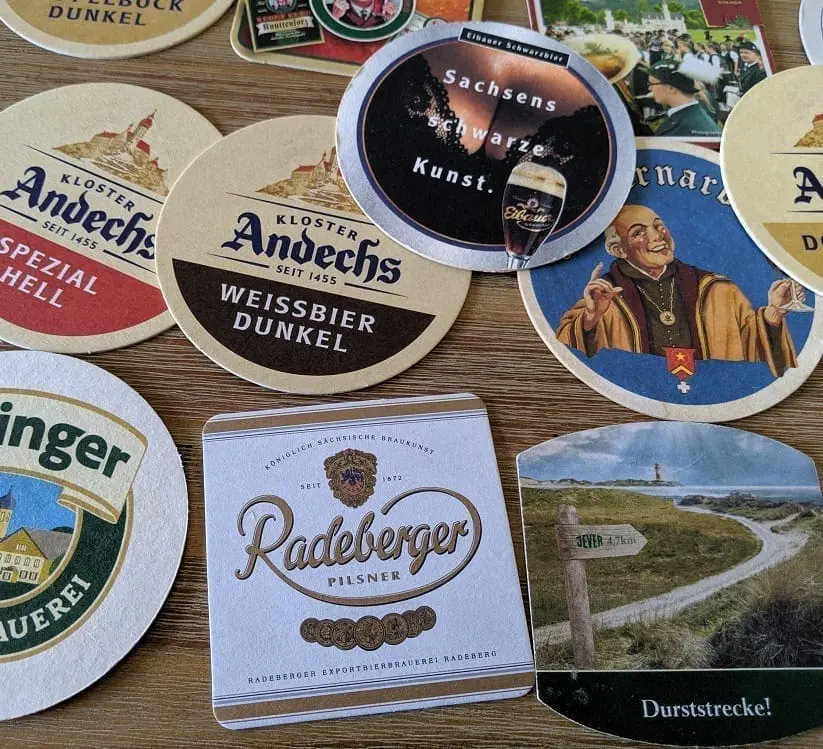
The Bierdeckel was Invented
In 1892, Robert Spruth, an inventor from Dresden, developed a machine that produced the first cardboard Bierdeckel. Wood pulp was pressed into molds, and the water was squeezed out. Then, the finished pieces could be popped out of the mold. Unfortunately, they didn’t have much staying power, and the production was a bit cumbersome. Then in 1903 Casimir Otto Katz of Murgtal took the idea and twisted it a bit. He devised a way to make Bierdeckel out of sheets of wood pulp from Spruce Fibers. The disks were punched out of the sheets. Not only was this a more efficient way to make them, but the long spruce fibers were highly absorbent, for better staying power.
Early Advertising
Besides being relatively cheap and light, German Beer Coasters had another benefit: you could print on them. In Germany, every brewer has coasters made with their label on it to leave at the restaurants. In the US, it’s a little different; here, every brewer and every restaurant wants that little square of advertising. To clarify, in the US, most restaurants have multiple different beers from different breweries on Tap. In Germany, establishments tend to have beer from one brewer. And why not? Who among us hasn’t slipped one into their pocket or purse as a souvenir?
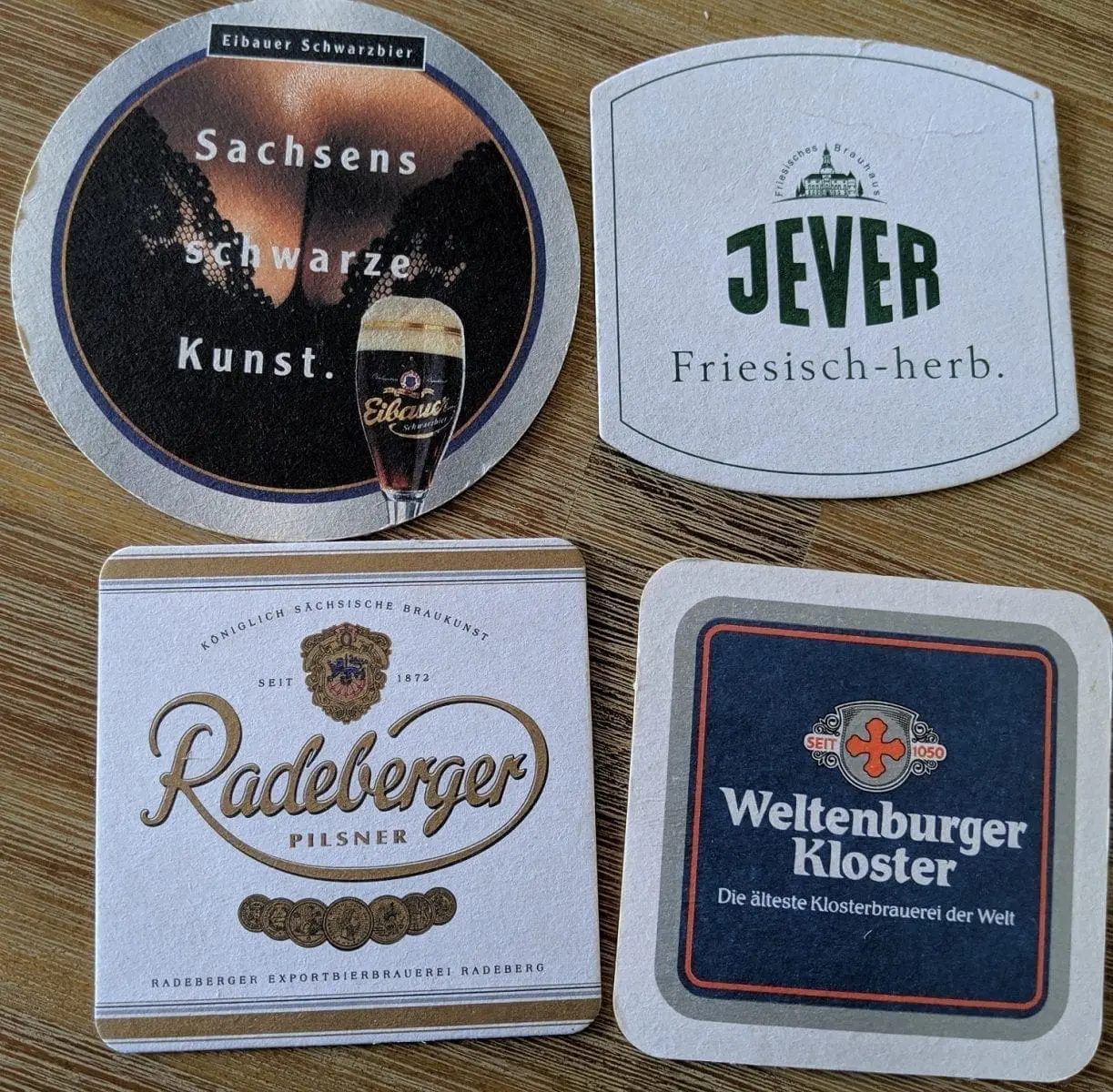
Keeping Track of a Tab
But the Bierdeckel isn’t just for protecting the table from water stains, or the beer from bugs! In Cologne, where Kölsch is king, servers use the paper coaster to mark how many beers you’ve had. Since Kölsch goes “flat” quicker, it is served in smaller glasses so you can finish before it does. Marking the coaster makes it easier to keep track of the tab.
The rest of Germany does something similar, and it’s not unusual to see a Bierdeckel covered with numbers and marks.
Made in Germany
75% of all Bierdeckel around the world are still made in Germany at the Katz company. Hard to imagine, but the company can produce between 5 and 7 MILLION coasters a DAY. Wood for the pulp is sourced locally in the Black Forest. But don’t panic about clear-cutting forests for coasters! The Black Forest is a carefully managed ecosystem. The smaller trees and brush are constantly being cleared to make room and maintain the forest’s health. It’s these smaller “extra” trees that become German Beer Coasters.
Collecting German Beer Coasters
Here’s your new word for today: “tegestology“. Essentially, it’s a fancy way to describe beer coaster collecting. (It might be good for a $2000 Jeopardy Question.) Like other bits of paper advertising (or ephemera), the Bierdeckel may not have started its life as a valuable object. Still, since it’s made of paper and intended to be thrown away or recycled, it becomes valuable to collectors over time. Brewery collectible clubs around the country have sprung up with a market for those pulp disks. Check out the Brewery Collectibles Club of America or the National Association of Breweriana Advertising.
Wooden Bierdeckel
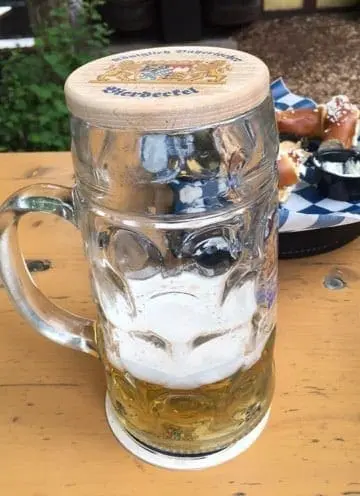
Thanks Dale for sharing this… a wooden Bierdeckel on top to protect the beer,
and a pulp one on the bottom to protect the table.
German Wood Beer Mug Cover for Beer Mugs & Steins | Wooden Beer Mug Cover | Hands Off! Das Ist Mein! | Keeps the Bugs Out! German Wood Beer Mug Cover for Beer Mugs & Steins | Hops & Malt | Keeps the Bugs Out! | Wooden Beer Mug Lid
German Wood Beer Mug Cover for Beer Mugs & Steins | Hops & Malt | Keeps the Bugs Out! | Wooden Beer Mug Lid
Since a good portion of my last trip to Germany was beer-related, I noticed a new (to me) type of Bierdeckel made of WOOD. The disk is cut to fit over the top of the glass or stein, and is printed on one side by the brewer. The underside fits into the glass or stein, making it less likely to slip off accidentally. Unfortunately, these Deckel are not free, so don’t even think about sliding one into your pocket.
German Beer Coasters in My World
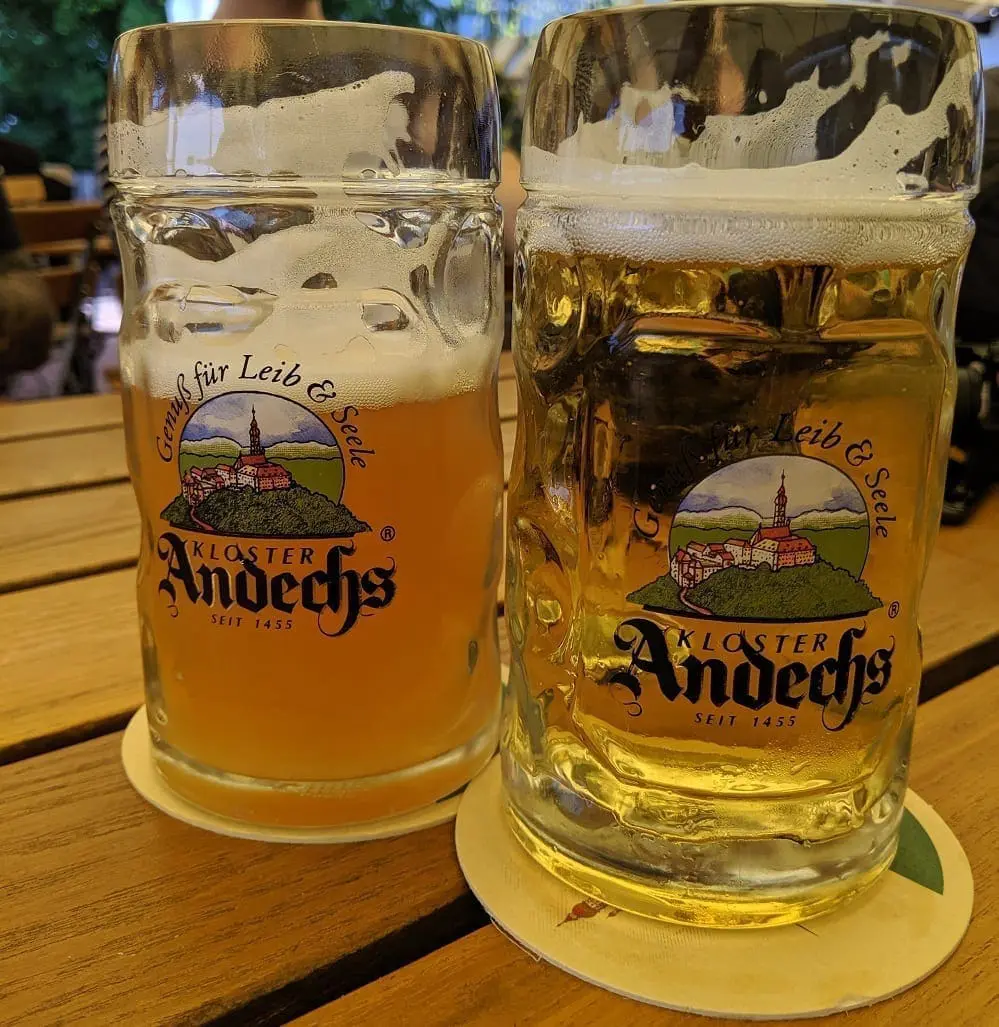
German Beer Coasters absorb moisture from the Glass
In our house, like my mother’s, coasters are mandatory, so I always bring home a few extras from Biergartens or Pubs. They make a nice memory, and they keep the moisture off the table.
And I’ve never EVER found a better way to level off an uneven restaurant table than to slide a folded Bierdeckel under the short leg!
Can’t Make it to Germany to Collect Bierdeckel?
There are loads of German Beer Coasters for sale here!
Vintage German Beer Coasters Brewery Hofbrau Lot of 40 unused Gift Packs Charles Zahn Oktoberfest https://tidd.ly/3U4vtCR
https://tidd.ly/3U4vtCR
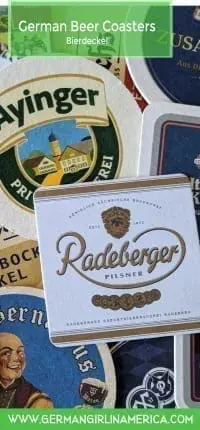
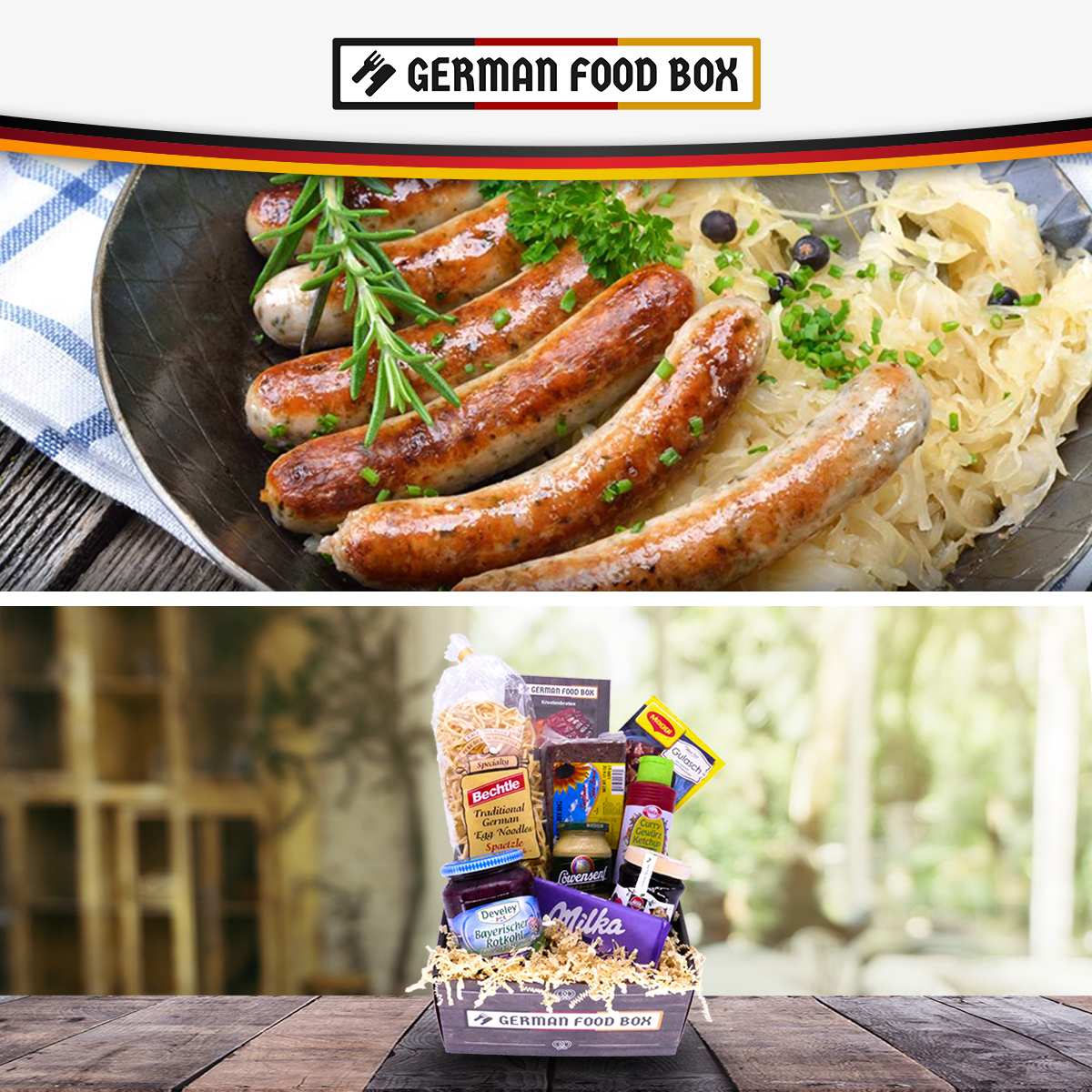




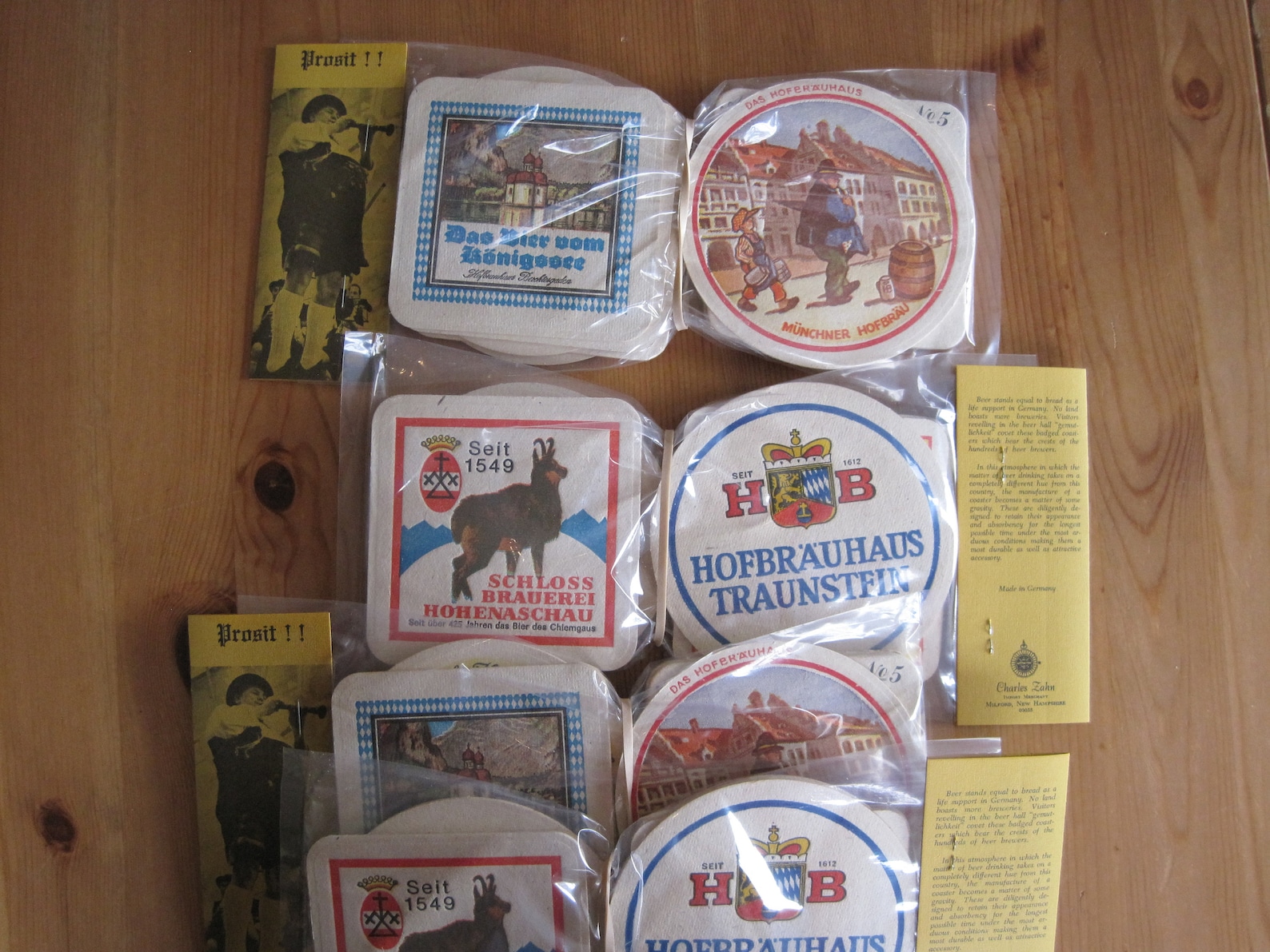
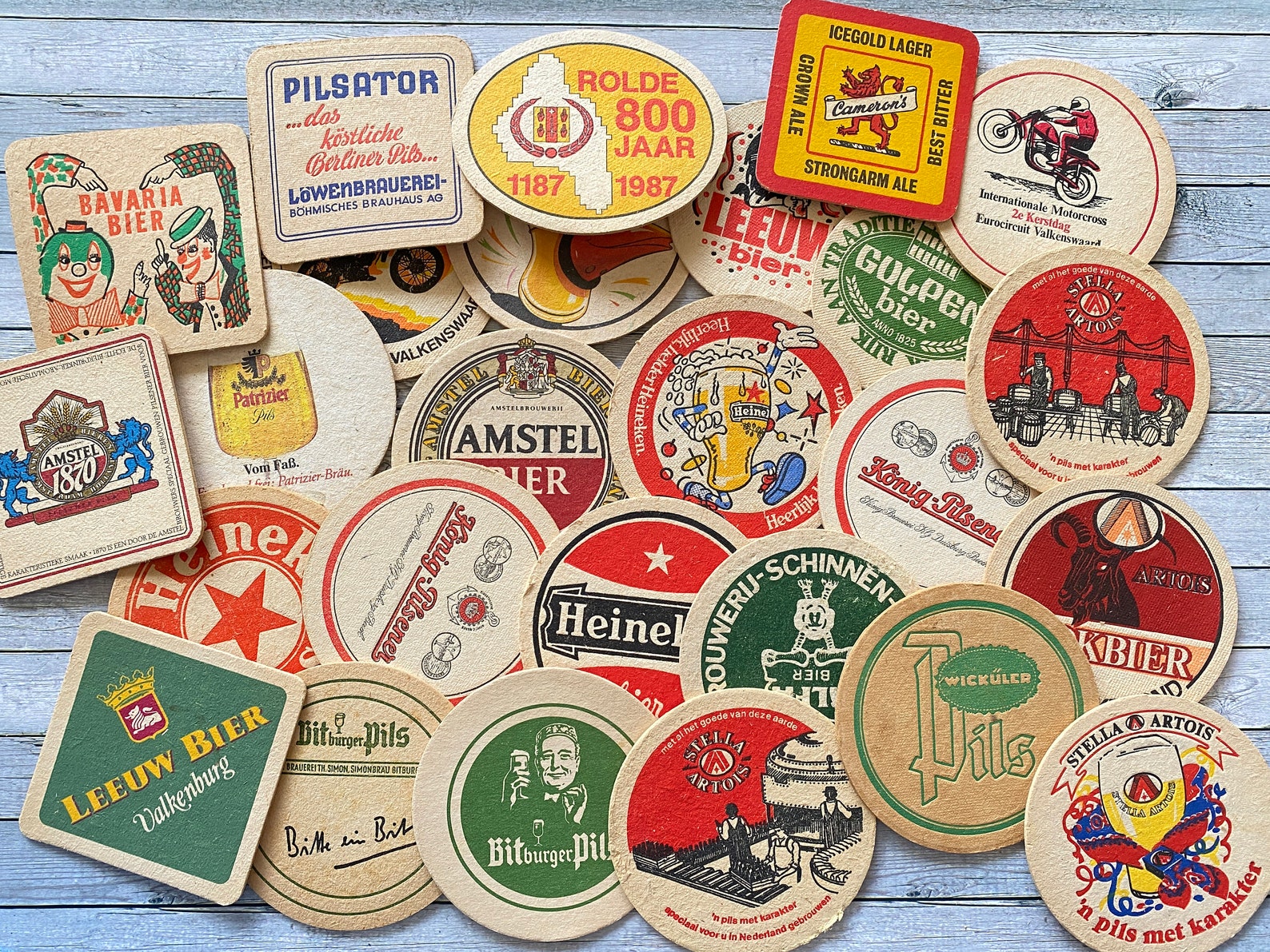
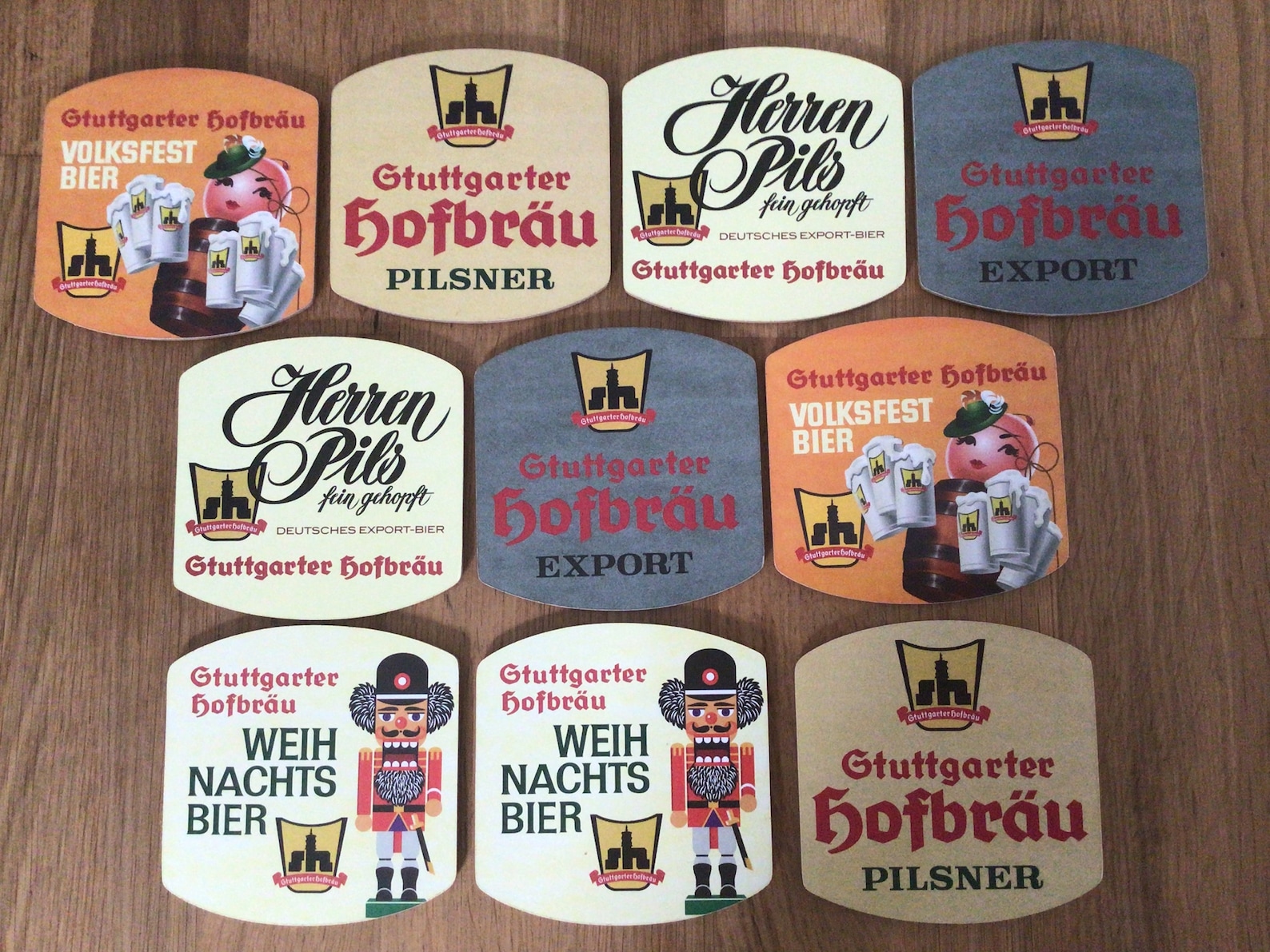
An old Bavarian word for bierdeckel that is not used anymore is bierfoyzel (forgive the spelling, I have no idea how it’s spelled). From your article I gather it translates to beer felt. Thanks for the information. Now the word makes total sense to me! My 85 year old father taught me that word.
Thanks!
I had been wondering why the Germans call it a “cover” but everybody puts it under the beer instead. Thanks for your well-written article!
You also place them on top of your beer to signal no more refills
Good to know! Thanks
I still have my collection of Bierdeckeln that I started in Germany in 1966.
Great article! Thank you!
You must have a great collection!
I like to share interesting articles like this with my husband by copying the page and printing or sending via FB. I can’t seem to do so. Is there a reason?
You should be able to just copy the link and send that? Does that no longer work?
A popular Joke for Bierdeckel is as follows:
I man is at the bar alone with a beer and has to go to the bathroom. So he takes a bierdeckel and writes on it, “do not take or drink my beer, because I spit in it”. He puts this on top of his beer, and feels confident his beer will be left alone while he relieves himself.
He comes back to his spot in a few minutes later and finds that someone wrote on his Bierdeckel “Ich auch” (me too)!!!
Hahahaha!! GROSS!!